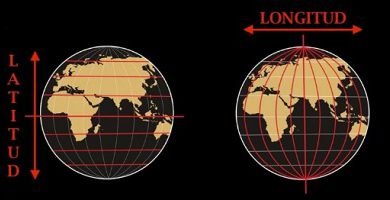What is the stationary state theory?
We explain to you what the steady state theory is, the perfect cosmological principle and the evidence that seems to refute it.
-
What is Stationary state theory?
It is known as Theory of the Stationary State, Theory of the Stationary Universe or Model of the Stationary Universe to a theory about the origin of the universe, proposed in the mid-twentieth century by the British physicist and astronomer James Jeans.
The fundamental precept of this theory is that the decrease in density that the Universe experiences in its constant expansion is complemented by the constant creation of new matter at an almost imperceptible rate (one proton per year for every km 3 of the universe).
This means that the universe has constant general properties, invariable in time and space, so its origin tends to infinity in the past, with an exponential expansion rate. In other words, this theory holds that the Universe never had an origin, but was always as it is today .
This formulation arises from the so-called Perfect cosmological principle : it maintains that given a sufficiently large scale, the Universe always presents the same properties regardless of from what point or what specific portion we observe. And, also, from the application of Einstein’s theory of general relativity.
Later to be proposed by James Jeans , it was reviewed in 1948 by specialists Fred Hoyle (United Kingdom), Thomas Gold (Austria) and Hermann-Bondi (Austro-British), among others. Today it is not considered a current physical model , but part of the history of modern cosmology.
-
Importance of the theory

This cosmological model is the main alternative theory regarding the Big Bang Theory , which assumes that at some initial time, the Universe was a unique particle in which everything that exists was compressed, and that it all began with a gigantic explosion that It boosted the expansion of spacetime.
Although the stationary model did not lack supporters at the time, and even Albert Einsten himself signed it at the time , today it is considered discarded. This is because the best observations of the distant universe show that it is a place in the process of change. For example, there are only quasars in remote regions.
In fact, the discoveries about the Cosmic Microwave Background (CMB), which in 1964 was detected and dated to some 13.7 billion years old, seem to prove the existence of an initial explosion.
-
Authors of stationary universe theory
There are still scientists who hold the Stationary Universe Model valid and oppose the Big Bang Theory. The main one is Jayant Narlikar (India, 1938), who is one of the most prominent astrophysicists in his country (and also a popular author of science fiction ).
Another of his supporters is C. Johan Masreliez (Sweden, 1939), a theoretical physicist and inventor who contributed significantly to the emergence of the Control Theory in the 1970s. His theories about it are set out in his text Cosmic Expansion in Scale (1999 ).
Meanwhile, the Australian scientist David Crawford presented in 2010 some supporting theories of the stationary model. His theories, together with those of Masreliez, are widely criticized especially for assuming that the redness of the light from distant stars is due to a supposed “tired light” rather than a light coming from an object that moves away.
There are other names to highlight, such as the theoretical physicist Roger Penrose (England, 1931), who interpreted certain circular patterns in the Cosmic Microwave Background as evidence that there was no Big Bang, but that the Universe is immersed in a continuous circuit throughout the eons.





